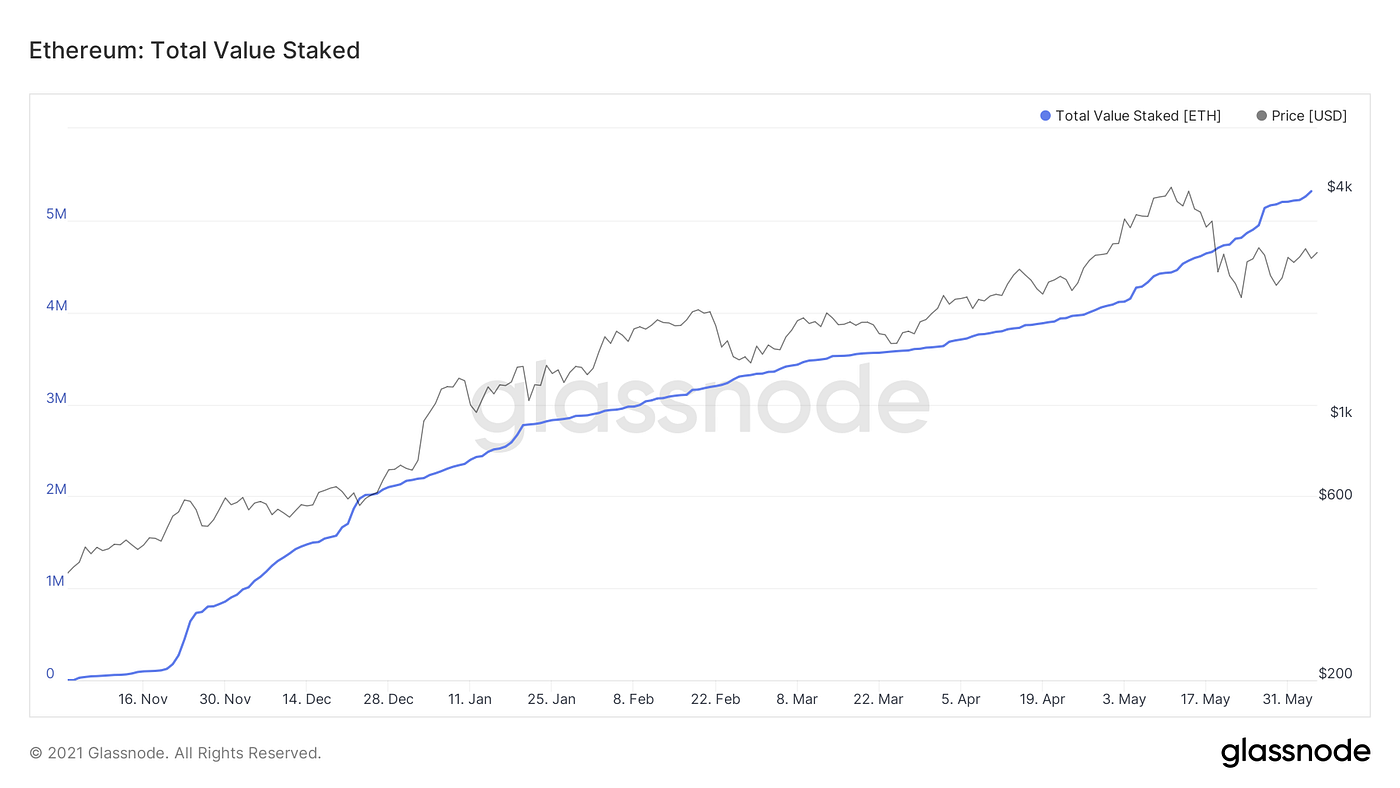ETH 2.0 staking has hit a milestone, with 5M ether staked on the PoS network. The merge, expected in 2021/22, has been one hottest conversations as DeFi continues to rise, even during The Miami Bitcoin Conference.

The migration to ETH 2.0 aims to make life better for existing users and entice new ones by solving some of the most critical problems while preserving Ethereum’s core value of decentralization. Some of the current issues faced by users and validators include:
- Clogged network
- Disk space, and
- Higher energy
Beacon Chain, the first major upgrade in the road to ETH 2.0, introduced staking. The idea behind Ethereum staking is to ensure that anyone can become a validator. While the network requires a minimum of 32 ETH, various platforms offer to stake for as low as 0.01 ETH.
The London hard fork, scheduled for July/Aug 2021, moves swiftly with recent upgrades made to EIP-1556 to a loophole that would allow fake large transactions to overwhelm the network.
The journey to ETH 2.0 has been long, with a roadmap created as early as 2015. According to Vitalik, one of the biggest problems that delayed the project rollout was not technical limitations, but constraints within the Ethereum core team.
Staking economy stats:

Top headlines from PoS world:
Algorand releases Algo Builder v1.0.
After over ten months of development, the Algorand team has released Algo Builder — a framework to build faster dApps on the Algorand blockchain. The platform currently allows anyone to build, test, deploy and maintain projects. The team aims to add further smart contracts templates (for DAO, NFTs, etc.) in future updates. Recently, there has been an increase in no code dapps platforms/ready-to-use libraries to accelerate the development process.
Oasis releases info on Cipher ParaTime.
Oasis Network is a layer-one, PoS decentralized network that has a consensus layer and a ParaTime layer. The separation of layers will aid in better scalability and versatility. Anyone can develop and build their ParaTime in isolation to meet specific needs. The Cipher ParaTime, is the second ParaTime on the network, following Oasis-Eth ParaTime, and will host interoperability modules, Wasm-based smart contracts, and confidentiality features.
Cartesi introduces governance upgrades.
To build a decentralized and secure future for Cartesi, the team has introduced the Cartesi Improvement Proposal (CIP) to establish and streamline the technical contributions in a decentralized manner. CIP takes ample inspiration from EIP (Ethereum Improvement Proposal) and PIP (Polygon Improvement Proposal). The team aims for the community to influence the project’s direction by proposing updates and participating in governance.
Chainlink price feeds live on Avalanche testnet.
One of the most widely used oracles, ChainLink, is now live on Avalanche testnet. The integration will help Avalanche developers to access tamper-proof data from a variety of assets. Made possible by the Chainlink Community Grant, the integration will be ported to Avalanche mainnet.
About ClayStack:
ClayStack is a decentralized liquid staking protocol that enables you to earn staking rewards while keeping your assets liquid. Without any lockups.
Get the latest updates!
Learn more about ClayStack, interact with our team, engage in community discussions, and share your valuable feedback.
- Telegram: https://t.me/claystack
- Twitter: https://twitter.com/ClayStack_HQ
- Website: https://claystack.com/
- Announcements: https://t.me/claystackchannel
- Alpha program: https://claystack.com/contact/alpha_tester